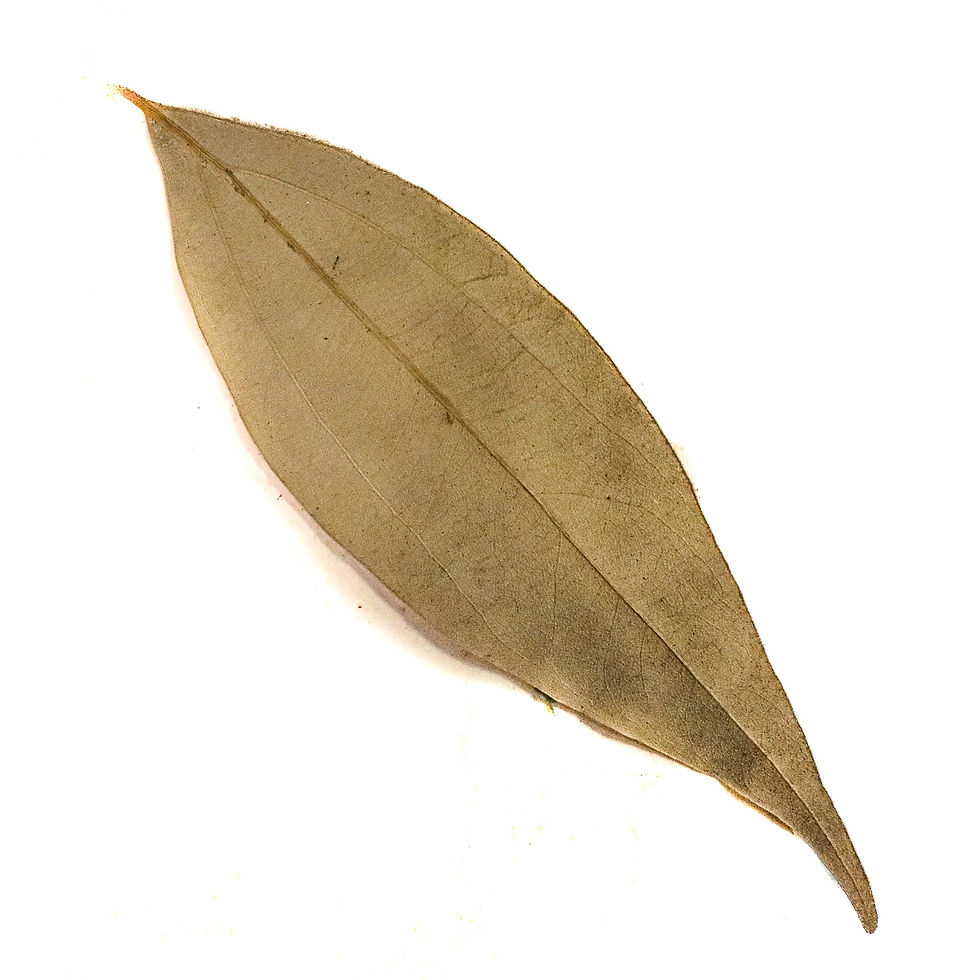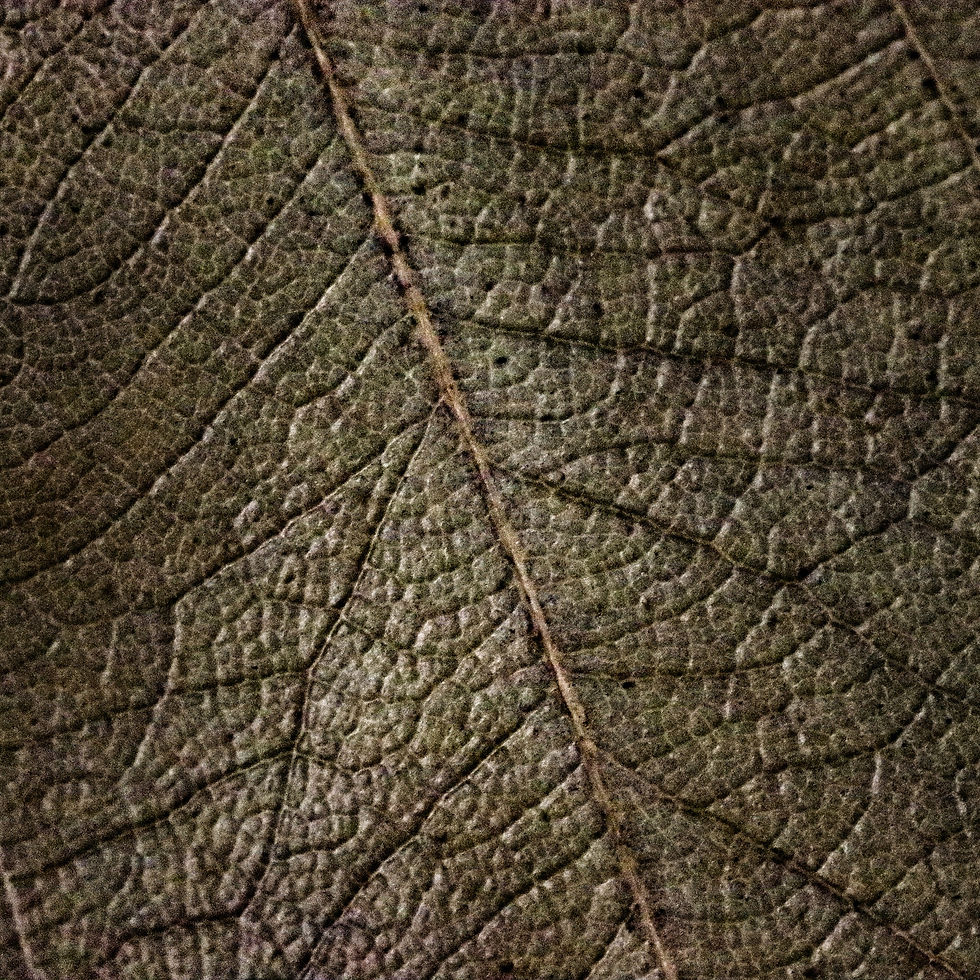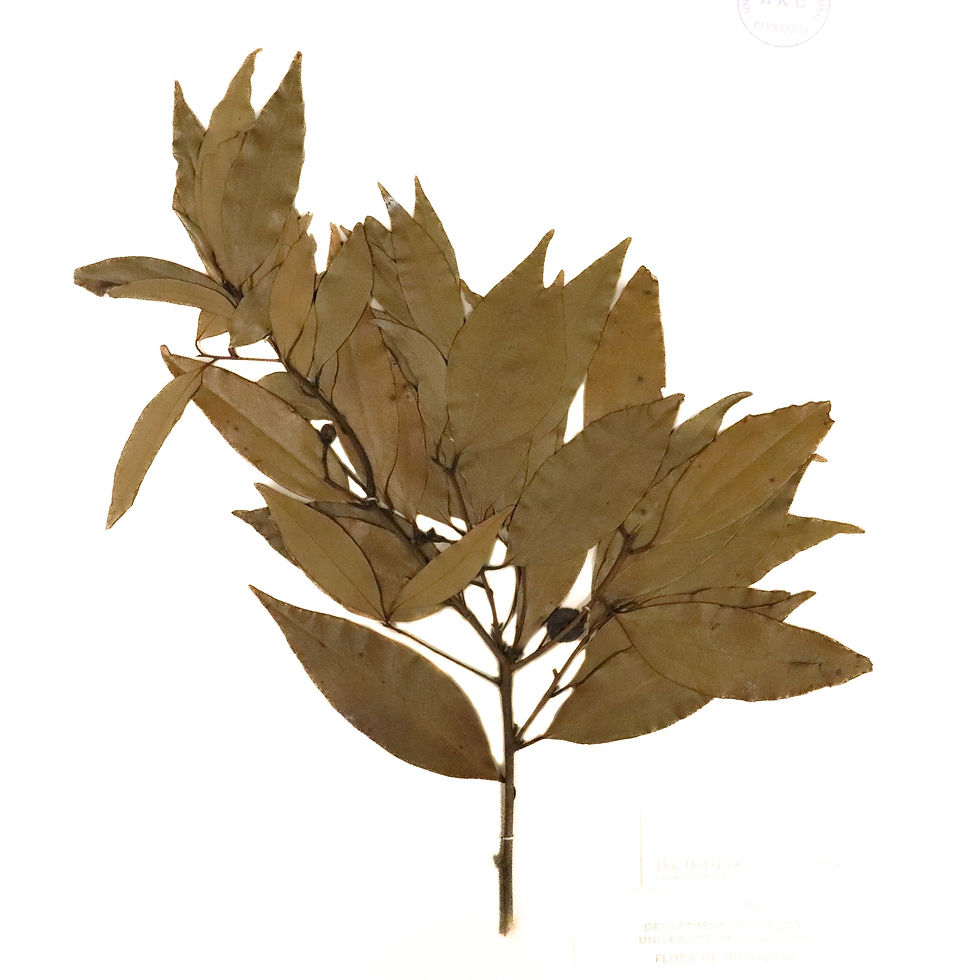The camphor tree is widely recognized in both urban and suburban settings, but there is another tree often mistaken for camphor that plays a significant role in our lives. These unassuming contributors bloom quietly, spreading their fragrance. This tree is the Padang cassia, 𝐶𝑖𝑛𝑛𝑎𝑚𝑜𝑚𝑢𝑚 𝑏𝑢𝑟𝑚𝑎𝑛𝑛𝑖𝑖 (Blume, 1826).

The Padang cassia, also referred to as Indonesian cinnamon, is an evergreen tree commonly found in humid tropical and subtropical climates. Belonging to the Lauraceae family, which also includes the laurel and avocado among nearly 3000 other species, this species is native to the moist tropical forests of southern China and Southeast Asia, and is particularly abundant in Hong Kong. Thriving in sunny or partially shaded environments below 2,000 meters, Padang cassia prefers well-drained sandy loam with consistent moisture and fertility. These perennial trees typically bear fruit for the first time in their fifth year of growth.

Mature Padang cassia trees can grow up to 15 meters tall, featuring smooth, fragrant bark and cylindrical branches tapering towards the tips. The glossy, elongated-oval leaves grow irregularly in pairs or scattered, starting off in a light pink hue and maturing into green. Flowering occurs from October to February of the following year, with fruiting taking place from December to April of the following year. Clusters of creamy axillary flowers bloom among the leaves, giving rise to small, deep blue oval fruits. These seeds would lose the ability to germinate if not stored properly and are often dispersed by birds, aiding in their propagation. Occasionally, brick-red insect galls develop on the fruit, and are commonly mistaken for Padang cassia fruit.

Padang cassia demonstrates a high tolerance to industrial pollutants such as chlorine gas and sulfur dioxide, allowing the tree to thrive in urban environments where air quality may be compromised. The leaves and bark act as natural filters, capturing harmful substances and particulate matter. Padang cassia usually have deep roots in the ground, reducing flooding in the rainy season and reducing drought in the dry season can stabilize soil and prevent erosion. In addition, the tree also provides a shelter and a hunting ground for wildlife in the forest.
In our societies, the Padang cassia is known for the fragrant and spicy aroma of its bark, and is frequently used as a spice in cooking, serving as a substitute for the Chinese cinnamon (𝐶𝑖𝑛𝑛𝑎𝑚𝑜𝑚𝑢𝑚 𝑐𝑎𝑠𝑠𝑖𝑎). The bark is also utilized for extracting essential oils primarily composed of cinnamaldehyde, free of eugenol, for soap and incense production. Moreover, the wood sourced from these trees finds extensive application in furniture and construction. Research has even highlighted the unique potential of Padang cassia fruits in producing natural food colorants and sunscreens.

Despite its virtues, Padang cassia is not without drawbacks, as its proliferation causes challenges to local ecosystems. Some varieties exhibit rapid growth and dense foliage, behaving like invasive species that compete with native plants for sunlight and nutrients, ultimately altering the structure of indigenous forest communities and impacting local species diversity. For instance, their introduction to the Hawaiian Islands may have contributed to the extinction of endemic bird species. Additionally, the bark's high coumarin content poses risks of liver damage with excessive use.
Feel free to explore the wonders of local plants and ecological discoveries at the Hong Kong Biodiversity Museum. If you found this article engaging, share it with your friends and stay tuned for our captivating biodiversity narratives released weekly!
Text: Dezer
#hkbm #hk #biodiversity #museum #specimen #ECFriends #attraction #weekend #ecology #Padangcassia #cinnamon

コメント